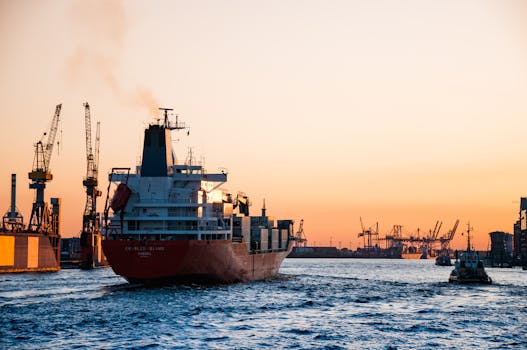
**
Germany, Europe's largest economy, is undergoing a significant economic reboot. Driven by a confluence of factors, including the war in Ukraine, energy crisis, global inflation, and a legacy of industrial reliance, the nation is aggressively pursuing a transformation that aims to bolster its competitiveness and secure its future. This "Energiewende" – or energy transition – extends far beyond simply shifting energy sources; it represents a fundamental restructuring of the German economy, impacting everything from manufacturing and supply chains to its social welfare system. This article delves into the key drivers behind this pivotal moment and examines the strategies Germany is employing to navigate this complex transition.
The Drivers of Germany's Economic Reboot
Several interconnected factors are propelling Germany's economic restructuring.
1. The Energy Crisis and Dependence on Russian Gas:
The Russian invasion of Ukraine brutally exposed Germany's over-reliance on Russian natural gas. This dependence, cultivated over decades, left the country vulnerable to geopolitical instability and soaring energy prices. The immediate impact was felt across industries, fueling inflation and threatening economic growth. The search for “German energy security” and “alternatives to Russian gas” surged, highlighting the urgency of the situation. The crisis accelerated the shift towards renewable energy sources and diversification of energy imports, fundamentally reshaping Germany's energy landscape and its industrial policies.
2. Global Inflation and Supply Chain Disruptions:
Global inflation, exacerbated by the war in Ukraine and lingering effects of the pandemic, presented further challenges. Supply chain bottlenecks, particularly affecting critical components for Germany's manufacturing sector, hampered production and increased costs. The need to address this fragility, often discussed under the keywords "German supply chain resilience" and "globalization risks," led to renewed emphasis on reshoring and diversifying supply chains, prioritizing regional partnerships and reducing reliance on single-source suppliers.
3. The Demise of the "German Model" and Aging Population:
Germany’s long-standing "social market economy" model, characterized by robust social safety nets and strong labor unions, is facing increasing pressure. An aging population and declining birth rate contribute to a shrinking workforce, placing strains on the welfare system and potentially hindering economic growth. The keywords “German demographic change” and “labor shortages Germany” reflect the growing concern around this issue. The government is grappling with reforms aimed at improving productivity, attracting skilled workers from abroad, and modernizing the labor market to address these demographic realities.
4. Technological Transformation and the Green Deal:
Germany is committed to achieving climate neutrality by 2045, as outlined in its ambitious Green Deal. This ambitious goal necessitates substantial investments in renewable energy technologies, energy efficiency measures, and green infrastructure. This transition, often referred to as the "German Green Revolution," is driving innovation and creating new economic opportunities in sectors such as renewable energy, energy storage, and electric vehicles. Keywords like "German renewable energy investments" and "electromobility in Germany" reflect this ongoing investment drive.
Germany's Reboot Strategies: A Multi-pronged Approach
Germany's response to these challenges is multifaceted, encompassing various policy initiatives and structural reforms:
- Accelerated Energy Transition: Massive investments in renewable energy sources like wind, solar, and hydropower, as well as the expansion of energy storage infrastructure. This includes streamlining permitting processes for renewable energy projects and accelerating the rollout of smart grids.
- Supply Chain Diversification: Efforts to reduce dependence on single-source suppliers and strengthen partnerships within the EU and beyond. This involves attracting foreign investments, supporting domestic industries, and enhancing logistics infrastructure.
- Investment in Innovation and Technology: Increased funding for research and development in key technologies, particularly those related to the green economy and digitalization. This includes boosting investments in digital infrastructure and supporting the growth of start-ups.
- Labor Market Reforms: Policies aimed at increasing labor market participation, attracting skilled workers from abroad, and enhancing vocational training programs. These efforts address labor shortages and improve productivity.
- Strengthening the Social Safety Net: While undergoing reforms, Germany remains committed to its social market model, aiming to adapt its social welfare systems to the changing demographics and economic landscape.
Challenges and Uncertainties: Navigating the Path Ahead
Despite the ambitious plans, Germany faces significant challenges in its economic reboot. The high cost of the energy transition, potential social resistance to reforms, and global economic uncertainty pose considerable risks. Successfully navigating these obstacles will require strong political leadership, effective policy implementation, and widespread societal buy-in.
The success of Germany's economic reboot will have significant implications not only for the country itself but also for the European Union and the global economy. The nation's experience offers valuable lessons for other countries facing similar challenges in the transition towards a more sustainable and resilient future. Ongoing monitoring of "German economic growth" and "German industrial policy" are crucial to understand the effectiveness of the ongoing restructuring. The path ahead is undoubtedly challenging, but Germany's commitment to transformation signifies its determination to secure its economic future and play a leading role in shaping the global economy of tomorrow.



















